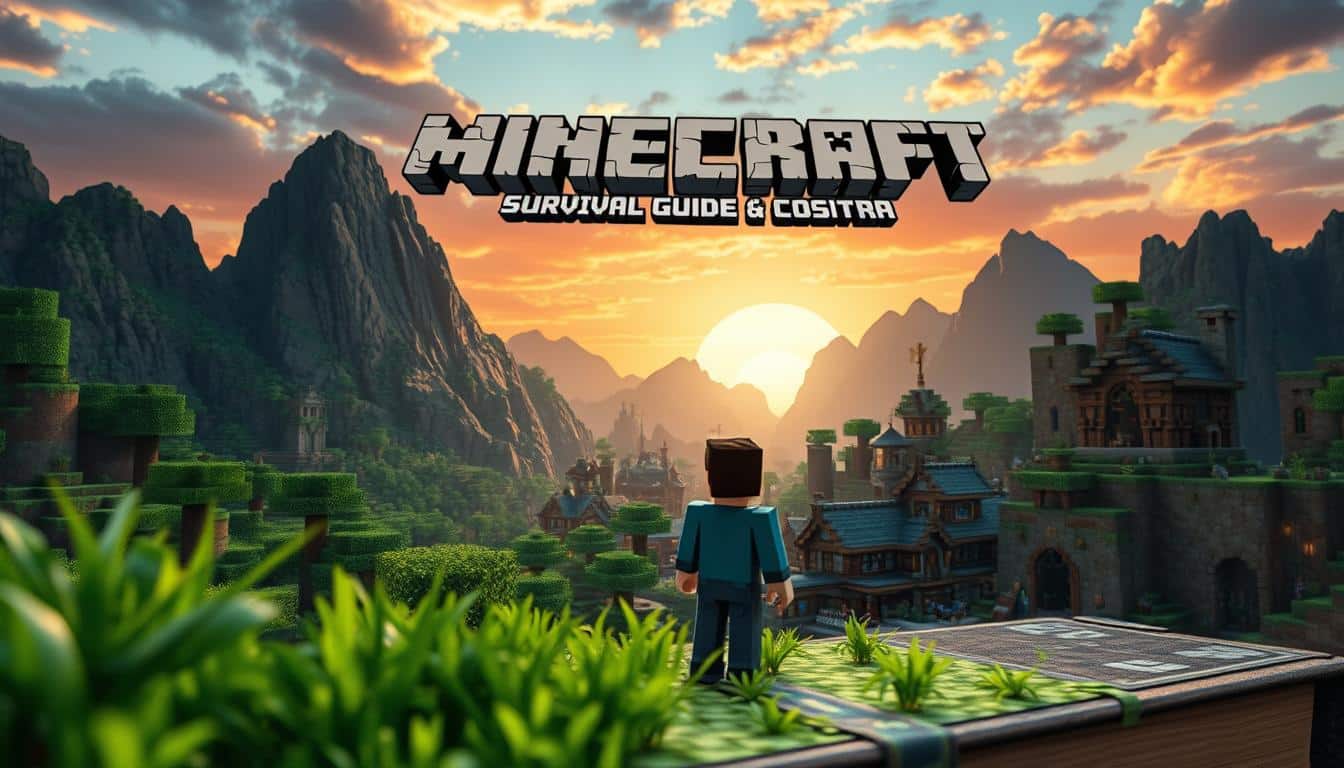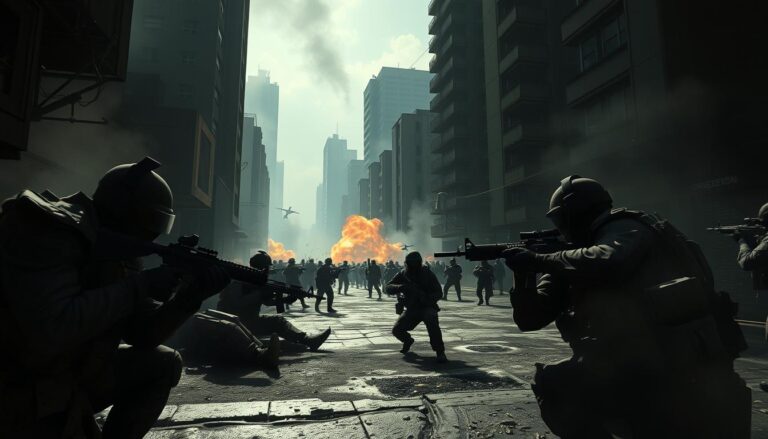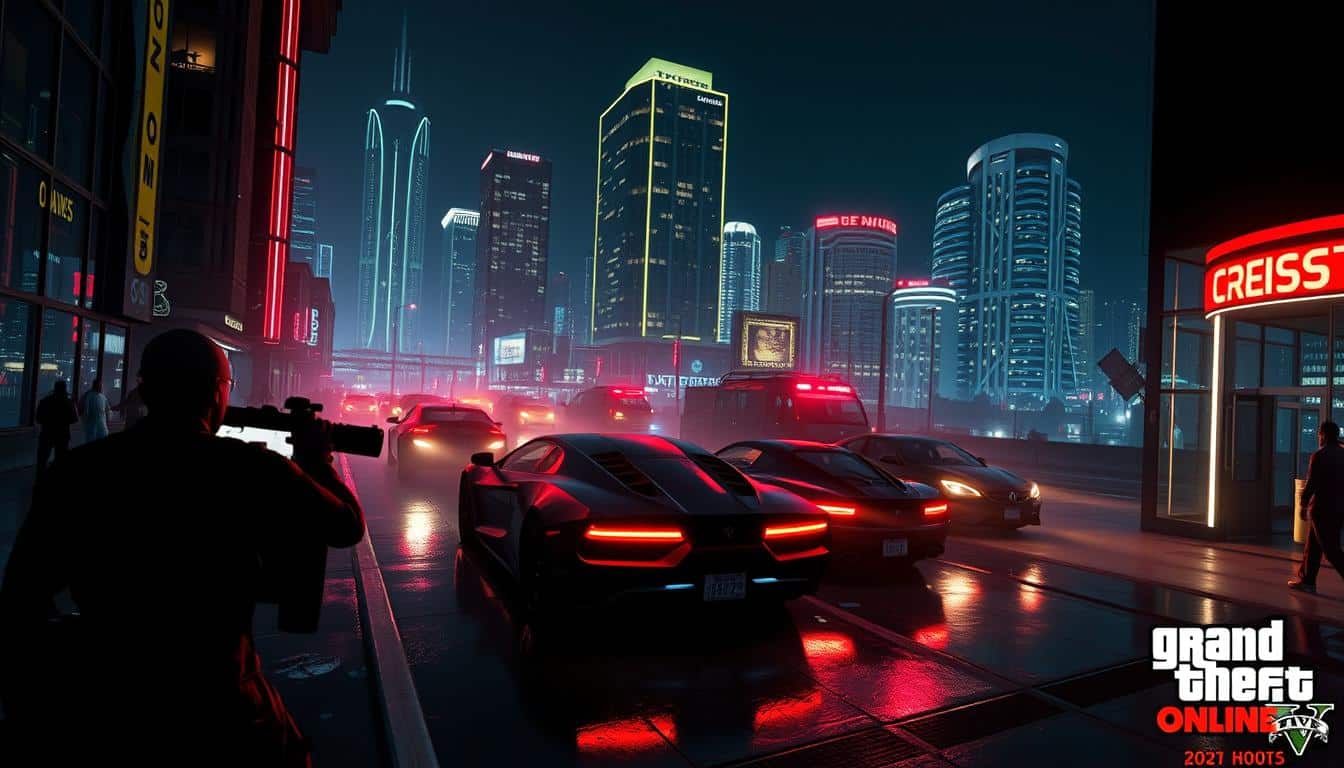This guide delivers actionable, up-to-date strategies to help you dominate Fortnite 2025. Whether you play on PC with an NVIDIA GeForce RTX card or on PlayStation and Xbox, the goal is simple: improve measurable skills and consistently win Fortnite 2025 matches. Expect practical steps you can use today and deeper tactics to refine over weeks.
Anúncios
We cover the full scope: mechanical skills like aim, building, and edits; game knowledge including map changes and rotations; hardware and settings to cut input lag; squad communication and role play; plus structured practice routines. The advice balances quick wins for casual players and detailed drills for competitive gamers aiming for victory royale 2025.
Throughout the article we will highlight Fortnite tips 2025 and explain how the Fortnite meta 2025 affects weapon choices and movement. The meta shifts fast, so this guide focuses on core habits that survive balance updates. Elevate your gameplay with the top Fortnite tips and tricks to win every battle in 2025. Master the island and claim victory royale!
Read on with a friendly tone and clear steps. Each section builds logically from settings and hardware to midgame decisions and endgame execution, ending with a training plan you can follow. Use this as a roadmap: practice deliberately, review your matches, and watch rank and win rate climb as you apply these Fortnite tips 2025.
Key Takeaways
- Optimize settings and hardware to reduce input lag and boost frame rates.
- Prioritize building and quick edits to survive close-quarters fights.
- Learn map rotations and zone timing to increase survival and third-party awareness.
- Practice aim routines and movement combos tailored to the Fortnite meta 2025.
- Use squad roles and clear communication to convert skirmishes into victory royale 2025.
Top Fortnite Tips and Tricks to Win Every Battle in 2025
Short wins start with clear habits. This guide focuses on practical steps you can use now to adapt to Fortnite meta shifts 2025. Read one module, practice it in Creative, then test in matches. Small, steady improvements add up fast.
Why these tips matter in 2025
Epic Games changes loot, map layout, and mechanics each season. That makes muscle memory and decision-making the most reliable edge. Players who refresh core skills like positioning, building, and aim stay competitive.
Pro teams and streamers demonstrate how utility use and faster rotations win rounds. Learning why Fortnite tips matter helps you prioritize what to drill and what to ignore during a patch cycle.
How game balance and meta shifts affect winning strategies
Weapon tuning and new items change which fights favor aggression or patience. When long-range arms get buffs, map control and cover matter more. When close-range options dominate, editing speed and peeks decide fights.
Follow patch notes from Epic Games and watch pro scrims to spot trends early. That practice lets you pivot loadouts and playstyle before the majority of players catch up.
How to use this guide while practicing
Treat each section as a practice module. Update settings, warm up aim in Creative maps, and drill edits. Then take those skills into live matches to test decision-making under pressure.
Track metrics like K/D, win rate, and damage per match. A simple log shows what changed after you applied a tip. Use the practice Fortnite guide to structure weekly sessions: mechanics, scenarios, then full games.
| Focus Area | Practice Drill | Metric to Track |
|---|---|---|
| Positioning | Rotation runs from hot drops to late zone, rehearse pivots | Average placement and rotation survival rate |
| Building & Editing | Timed 90s, piece control, and edit courses in Creative | Edits per fight and edit success under pressure |
| Aim | Tracking and flick routines in aim trainers and warmups | Accuracy by weapon and damage per match |
| Item & Utility Use | Simulate swaps between shields, heals, and mobility items | Healing time and successful escape/engage outcomes |
| Strategy Review | Watch VODs of pro scrims and your own clips weekly | Decision errors reduced per session |
Essential settings and hardware for competitive play
Getting the right mix of settings and gear makes a big difference in matches. Tweak game options, network choices, and peripherals to squeeze more frames and cut input delays. Below are practical steps you can apply on PC and console to improve consistency and win more fights.
Recommended PC and console settings for max FPS and input lag reduction
On PC, switch to Performance Mode when available and pick quality presets that favor higher frame rates. Lower render distance if your GPU is the bottleneck. Turn down post-processing and shadows to reduce visual clutter and raise FPS. Use DirectX 12 or Vulkan after testing which runs smoother on your rig. Cap the frame rate slightly above your monitor refresh if you use adaptive sync.
For consoles, enable Performance Mode or equivalent to prioritize framerate. Put your TV or monitor into Game Mode to cut input lag. Use wired Ethernet and disable background downloads to stabilize ping. Aim for a consistent connection under 50 ms when possible. Router QoS can help prioritize gaming traffic.
Best Fortnite hardware picks to pair with settings
Choose a reliable low-latency mouse such as the Logitech G Pro or Razer Viper if you play on PC. Monitors with 144Hz or higher and 1–4 ms response times give smoother motion and better tracking. For controllers, the Xbox Series Controller and PlayStation DualSense work well, with low-latency adapters available for competitive players.
Controller vs. keyboard/mouse: sensitivity and keybind suggestions
Keyboard and mouse players often run DPI in the 400–800 range. Pick an in-game sensitivity that balances precise long-range aiming with quick flicks. Map building pieces to easy keys; common options are Q and E for ramps and walls. Assign a dedicated edit key to speed up edits and build fights.
Controller players should train consistent sensitivity and pick linear or exponential curves based on feel. Lower ADS sensitivity compared to hip-fire to steady aim during scopes. Use paddles or back buttons for build and edit binds on pro controllers to cut reach time. These sensitivity settings help reduce input lag and improve reaction times.
Audio and visual settings to spot enemies and hear rotations
Boost contrast and apply light sharpening to make player outlines clearer. Consider colorblind or high-contrast HUD presets if they help you spot movement. Reduce foliage and particle effects if they hide targets. These choices aid FPS optimization Fortnite while improving visibility.
Turn on 3D spatial audio and set sound quality to high in Fortnite settings. Use good positional headphones such as SteelSeries or HyperX models instead of cheap headsets. Raise sound effects volume over music and voice to pick up footsteps, material breaks, and glider redeploys. These audio cues reveal rotations and nearby threats.
Small tweaks to sensitivity settings, network setup, and hardware selection combine to create a smoother, more responsive experience. Aim for balanced choices that support your playstyle and keep FPS optimization Fortnite and input lag reduction front of mind.
Landing and early-game strategies to secure advantage
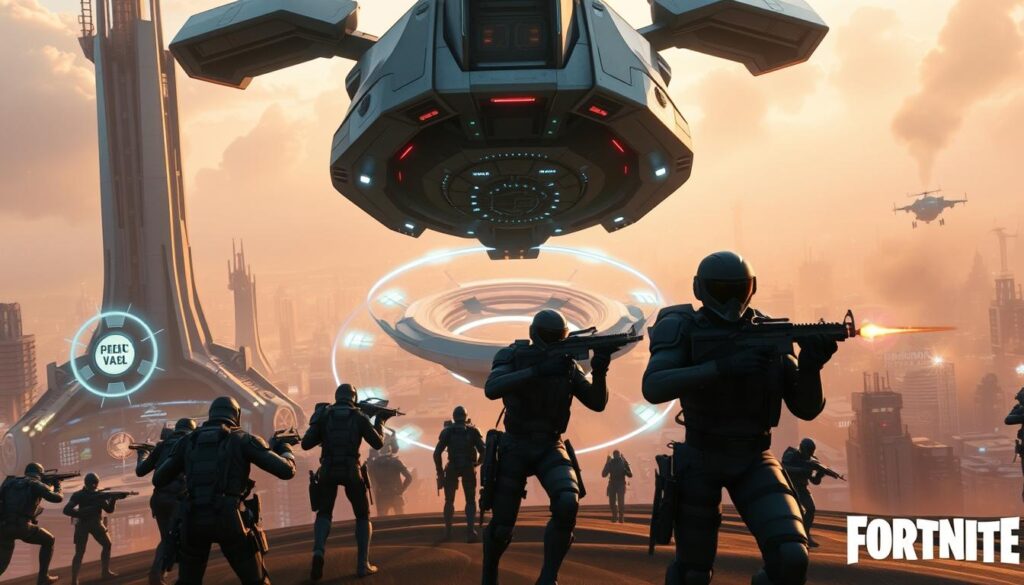
Landing well sets the tone for every match. Use drop choices that fit your style and the flight path to gain loot and space. Small adjustments in the opening seconds turn routine drops into early-game Fortnite wins.
Choosing where to land
Pick from the best drop zones 2025 based on risk and reward. Aggressive players should favor hot POIs with dense loot and many players for quick eliminations. If you prefer consistency, choose edge POIs or smaller clusters of buildings to reduce conflict and ensure steady materials.
Map knowledge that matters
Track seasonal POI rotations and chest spawn patterns. Knowing where vehicles and mobility items spawn helps shape safe early rotations. If the flight path passes your target late, drop early for isolated loot. If it passes through the middle, aim for mid-route POIs to encounter fewer squads.
Loot priorities in the first minute
Secure a close-range weapon like a shotgun or SMG first, then grab a mid-range gun such as an assault rifle. Add shields or healing as soon as possible. Mobility items like launch pads or shockwave grenades are high-value when you lack map control.
Materials and quick upgrades
Gather wood immediately to support fast build fights. Upgrade to stone or metal once you have space and time. Good material economy in early game Fortnite reduces risky plays and lets you contest fights on your terms.
Smart early rotations
After looting, move toward the zone center while scanning for open loot and enemy movement. Use cover and high ground to avoid traffic. If you secure eliminations, loot bodies fast and reposition before third parties arrive.
Third-party awareness
Expect third-party tactics after any fight. Build defensively when looting and use smoke or mist grenade effects to hide. Break line-of-sight and reset fights to regain control. Sound discipline while looting lowers the chance of unwanted attention.
Immediate survival plays
If outnumbered, use quick heals and mobility to escape rather than chase weakened foes in open space. Repositioning and healing keeps you alive longer and often wins the mid game. Prioritize survival over greed in the opening minutes.
| Decision | When to use | Benefit |
|---|---|---|
| Hot drop at major POI | Aggressive playstyle, confident aim | Fast eliminations, high loot, mat rush |
| Edge POI or small build cluster | Safe rotation, steady loot preference | Consistent gear, easier rotations, fewer fights |
| Prioritize mobility items | When lacking zone control or vehicles | Escape options, creative rotations, third-party avoidance |
| Grab wood first | Immediate post-landing phase | Quick builds, ramp fights, defensive cover |
| Loot-and-reposition after kills | After successful elimination | Prevents third-party tactics, secures materials |
Building and editing techniques that win fights
Mastering builds and edits turns tense skirmishes into wins. Focus on clean, repeatable moves that blend offense and defense. Train to place structures without breaking aim and to chain edits into shots under pressure.
High-pressure builds give you instant cover and control. Use 90-degree turns, ramp+tower combos with side walls, and triple-layered box builds for immediate safety. These setups buy time to perform quick edits or recover health.
For close fights, practice quick edits on demand. Window edits for shotgun peeks and cone edits to trap opponents are vital tools. Add floor-place and roof-peeks to confuse enemy aim and create openings.
Edit patterns can outplay predictable opponents. Chain a wall-window into a stair peek to misplace their reticle. Time-sensitive edits in the 0.2–0.4 second range win many close-range duels.
Use edit-reset techniques to punish peeks. Cut a pyramid or cone, then immediately replace the piece to shift your hitbox and force misses. This edit-reset method is effective in rapid trades and can secure fast kills.
Layered edits increase ambiguity. Mix wall edits with stair shifts and roof edits to hide your true angle. Practicing these patterns builds muscle memory for smooth transitions during high-pressure builds.
Builds do more than block shots. They shape sightlines and funnel enemies into predictable paths. Wall off choke points, use cones and roofs to break aerial sight, and channel opponents into your kill zones.
When the zone tightens, choose minimal, purposeful structures. A box plus cone protects from peaks while conserving materials. Prioritize high ground with compact builds to maintain zone control Fortnite without wasting resources.
Anticipate opponent edits and pre-rotate pieces to counter angles. Using builds to predict movement secures placement advantages during rotations through storm and contested areas.
- Practice drill: warm up with 50 rapid quick edits, then follow each with a shot.
- Routine tip: alternate pyramid edit-resets and cone traps for variety.
- Endgame rule: build small, smart, and fight for sightline dominance.
Advanced combat mechanics and aiming drills
Sharpening aim and movement lets you win more fights. Start with a clear warm-up and split time between smooth target tracking and fast flicks. Keep sessions short and focused so muscle memory builds without fatigue.
Tracking vs flick practice routines matter for different weapons. Spend 10–15 minutes on tracking drills that mimic real fights. Use Creative maps and aim trainers to follow targets smoothly, emphasize crosshair placement, and make small mouse corrections for rifles and SMGs.
Next, do 10 minutes of controlled flicks for close bursts and shotgun snaps. Use flick trainers and Creative rooms that spawn targets at varied angles and distances. Finish warm-up with 10 minutes in a build/edit map to link aiming to movement and edits.
Weapon-specific work matters for the 2025 meta. For assault rifles, practice burst control and torso-to-head transitions. Learn recoil patterns and when to burst-tap at mid-range.
Shotguns require timing and positioning. Pre-aim at head level, master pump and double-tap timing, and use edits to create windows or cone-traps that force one-shot opportunities.
SMGs excel in tight spaces. Pair an SMG with a shotgun for rush plays, focus on strafing, and use ADS micro-adjustments to tighten spread and land more bullets up close.
Keep an eye on patch notes that change damage falloff or fire rates. Adjust routines to reflect those updates and keep weapon tips 2025 current.
Movement combos make you harder to hit and open offensive windows. Practice jump-shoot-strafe and crouch-peek resets to break aim rhythms. Use side-to-side baiting to lure predictable shots, then punish with a counter-swing.
Blend builds with mobility items for unpredictable plays. Combine a roof plus cone with a jump pad or shockwave to reposition immediately after contact. Work on surfing and tight-angle strafes to dodge while keeping control of engagements.
| Focus | Drill | Time | Goal |
|---|---|---|---|
| Tracking | Creative tracking maps, Kovaak-style follow drills | 10–15 min | Smooth crosshair movement, small corrections |
| Flicking | Flick trainers, angle change target spawns | 10 min | Fast, accurate snaps for shotguns and bursts |
| Integration | Building/edit warm-up maps | 10 min | Combine aim with edits and movement |
| Weapon drills | Recoil patterns, burst-tap, pump timing, ADS micro-adjusts | Daily rotation | Apply weapon tips 2025 across playstyles |
| Movement | Jump-shoot-strafe, crouch-peek, surf strafes | 5–10 min | Make yourself hard to hit, set up kills |
| Meta check | Review patch notes and test changes in practice | Weekly | Adapt play to shifting balance and tracking vs flick needs |
Rotations, zone management, and end-game positioning
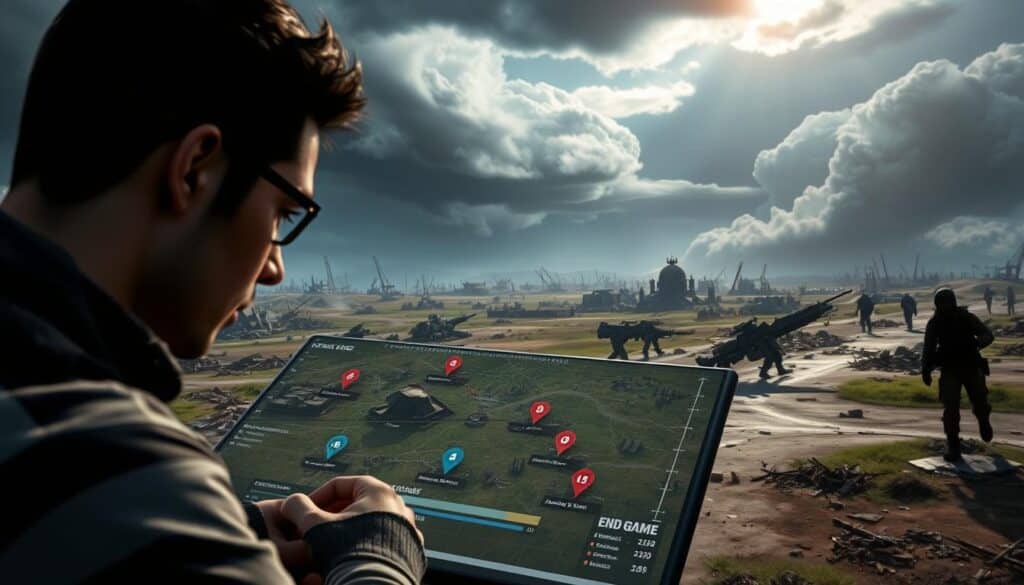
Smart rotations and clean zone management separate wins from losses in fast, chaotic matches. Focus on timing, cover, and where opponents are likely to funnel. Use mobility tools when the circle forces early movement and slow down when the final rings reward high ground.
Reading the storm means more than watching the timer. Track whether the circle favors open-speed rotations or tight, late-game compressions. Study pro heatmaps and stream replays to learn common roads and river lanes. Spotting these paths helps predict opponent movement and gives you the advantage in Fortnite rotations 2025.
Anticipate where crowds will gather. Early circles push players along predictable routes. Late circles force clumps into small pockets. Choose mobility items like Shockwave Grenades or Rift-to-Go when the map demands long moves. Pick static defenses and high towers when the storm compresses for stronger endgame positioning.
Rotating through traffic requires timing and concealment. Move after a fight finishes to exploit third-party windows. Use builds, smoke, and natural cover to break sightlines. Flank on high ground or slip through underground passages to avoid chokepoints while keeping supplies and shields ready.
Never take the same path twice in a match. Vary routes and use mobility to bypass heavily traveled corridors. If you must cross open areas, do it quickly and on cooldowns for healing items. Clean timing improves survival odds and tightens your zone management Fortnite skills.
Solo end games reward conservative sightlines and a single controllable tower. Hold angles that force enemies into your view. Trade fights only on your terms and prioritize shots that secure zone control.
Duo end games work best with split responsibilities. One player holds vision and high ground while the partner provides pressure and quick resupplies. Aim for crossfire setups that limit escape routes and make third-party plays costly.
Squad end games demand layered defense and communication. Overlap fields of fire and assign a dedicated medic or resource runner. Use coordinated builds to block advances and rotate as a unit so you never lose structure or sightlines during critical storm shifts.
Practice these rotation habits and refine storm reading Fortnite instincts through replay review. Small adjustments in timing and route choice compound into more consistent wins when mastering zone management Fortnite and endgame positioning.
Teamplay, communication, and synergy for squads
Strong team cohesion wins more matches than lone hero plays. Use clear role assignments and loadout planning to cover long range, close quarters, utility, and building support. Practice simple callouts and reliable ping communication to speed decisions in high-pressure moments.
Role assignments matter. Assign a shotcaller/leader, an entry fragger, a support/medic, and a flanker. Let each player pick the squad role that fits their strengths. That reduces overlap and maximizes options during fights.
Complementary loadouts reduce waste. One player carries an assault rifle for mid-range, another keeps a shotgun or SMG for close fights, a third stocks mobility and heals, and the fourth handles heavy or long-range gear.
Use standardized short callouts. Say “top-right tower,” “third-party,” or “push in three” to remove confusion. Pair verbal calls with fast pings so everyone sees the same marker. Good ping communication saves seconds and prevents misreads.
Keep voice chat calm and concise. Share only essential facts: enemy count, shield status, and ammo needs. Short updates beat frantic chatter and keep teamplay Fortnite focused under pressure.
Plan revives before engaging. Have one player cover revives while teammates create cover with builds or utility. That reduces wipe risk and speeds recovery during rotations.
Share materials, ammo, and healing proactively. A squad that pools resources holds angles longer and wins late-game standoffs more often. Prioritize sharing to the player who needs the item most.
Coordinate pushes with stacked utility. Combine a shockwave or launch with flash devices and a timed entry to overwhelm single defenders. Simultaneous pressure reduces exposure to third-party attacks and sharpens timing for successful trades.
| Squad Role | Primary Loadout | Secondary Tasks |
|---|---|---|
| Shotcaller / Leader | Assault rifle, mid-range scope | Map decisions, call timings, final rotations |
| Entry Fragger | Shotgun or SMG, mobility item | Initiates fights, clears space, secures flanks |
| Support / Medic | Utility (heals, shields), light AR | Revives, heals, shares materials and ammo |
| Flanker / Rotator | Long-range option or heavy, building mats | Third-party watch, cut rotations, pressure weak angles |
Training routines, tools, and progression tracking
Solid practice beats random play. Use focused sessions, proven tools, and clear metrics to level up your game. This short guide lays out which creative islands to choose, how to schedule practice, and how to track gains with replays and stats.
Best creative maps and aim trainers for 2025
Start warm-ups on updated community islands. Look for Aim Labs-style tracking rooms, 1v1 box fight arenas, and edit courses that reflect current patch mechanics. Pro playlist maps used by esports teams help simulate late-game pressure. Complement those islands with third-party software like Kovaak’s Aim Trainer or Aim Lab for pure mechanical drills.
How to structure daily and weekly practice
Keep daily sessions short and intent-driven. A sample warm-up: 10–15 minutes of aim drills, 10–15 minutes of editing and building, then 10–20 minutes of box fights or quick scrims. That routine prepares both muscle memory and decision speed.
Block weekly focus sessions for deeper work. Spend one session on aim, one on rotations and decision-making, and one on team scrims. Reserve one day for passive learning: watch pro VODs, read patch notes, and reflect on what to test next.
Tracking your improvement with stats and VOD review
Track K/D, win rate, accuracy, and placement trends using in-game stats and trusted third-party trackers. Save replays and perform a VOD review Fortnite routine after key sessions. Note recurring mistakes like poor rotations, missed edits, or bad positioning.
Create a simple checklist from each VOD review. Timestamp notable plays, tag the error type, and assign a fix to the next practice block. Set measurable goals, for example increase win rate by a target percent in 30 days or cut average time-to-kill by a set number of seconds.
- Daily warm-up: short, repeatable, focused.
- Weekly deep sessions: rotate skill targets.
- Track with tools and honest VOD review Fortnite notes.
Balance practice with rest. Adjust maps and aim trainers Fortnite drills as patches change. Keep logs and iterate until your metrics show real progress.
Conclusion
This guide shows that mastering Fortnite in 2025 is a mix of smart settings, solid hardware, and focused practice. Tune your PC or console, refine your keybinds and sensitivities, and build reliable warm-up routines to support mechanical growth. Those steps create the foundation for effective Fortnite win strategies 2025.
Combine mechanical skills—aim, building, and edits—with map knowledge, rotation planning, and squad communication to convert advantages into wins. Commit to daily drills, study pro players like Turner “Tfue” Tenney and creators who test new meta trends, and review VODs to spot repeatable improvements. This approach is essential to master Fortnite 2025 and adapt when Epic Games updates balance and map features.
Make small, measurable goals: update settings, log practice time, and track stats after each session. Follow patch notes, try recommended creative maps, and use targeted drills to close gaps. Steady improvements measured by VOD review and performance data will raise your consistency and deliver more victory royale tips you can rely on during clutch moments.
FAQ
What are the most important settings to change first for better Fortnite performance in 2025?
Should I play on controller or keyboard and mouse to climb faster?
How should I warm up before jumping into competitive matches?
What weapons and items should I prioritize during early-game looting in 2025?
How do I avoid getting third-partied after fights?
What building and edit techniques consistently win close-range fights?
How do I decide where to drop on the map for each match?
What daily and weekly practice schedule will lead to measurable improvement?
Which Creative maps and third-party tools are best for 2025 training?
How do rotations and zone reads change in late-game scenarios?
What team roles and loadouts work best for squads aiming to win?
How can I track my improvement and identify recurring mistakes?
What pro resources should I follow to keep up with meta shifts in 2025?
Which audio and visual settings help me spot enemies and hear rotations better?
Content created with the help of Artificial Intelligence.

